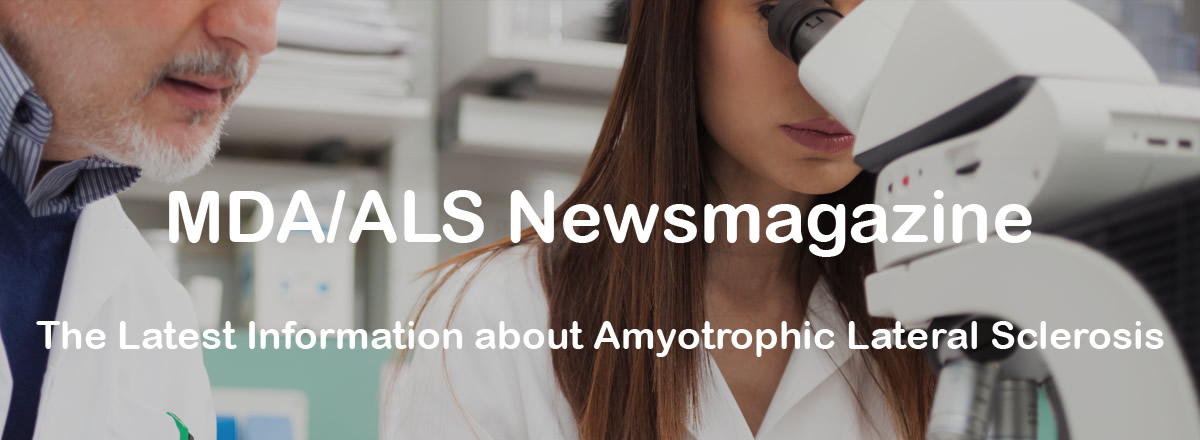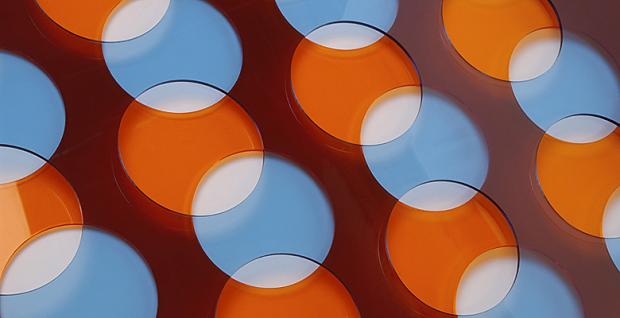
FUS and ALS: What's the Connection?

A roundup of research about how the FUS gene and FUS protein may contribute to the development of amyotrophic lateral sclerosis
The gene for FUS was associated in 2009 with some forms of ALS (amyotrophic lateral sclerosis, or Lou Gehrig’s disease).
Now, overlapping findings from four recent studies have revealed tantalizing clues about the molecular underpinnings of FUS-related forms of the disease.
FUS (also called FUS/TLS for “fused in sarcoma – translated in sarcoma”) normally resides inside the cell nucleus, where it serves its primary function as an RNA binding protein. (RNA is the chemical step between DNA and protein synthesis. Through multistep RNA processing, the cell's protein building machinery reads genetic instructions carried in DNA and manufactures the proteins it encodes.)
Previous studies have shown that both mutant forms of FUS and excessive amounts of normal FUS protein are found in the main compartment of the cell (the cytoplasm) instead of in the nucleus.
In ALS-affected muscle-controlling nerve cells in the spinal cord (spinal motor neurons), or in the glial cells that nourish and support motor neurons, FUS recruits other proteins and assembles into clumps. These clumps are called inclusion bodies or aggregates. In addition, FUS-containing stress granules (a type of protein clump that forms when a cell is in trouble) can occur.
Although FUS mutations are predominantly associated with familial (inherited) ALS, inclusions containing FUS protein (a hallmark of FUS-related familial ALS) have been found in the motor neurons of people with the noninherited, or sporadic, form of the disease. This makes it likely that an understanding of FUS-associated familial ALS will provide a clearer picture of sporadic ALS as well.
Here are reports from four investigations of FUS in ALS.
Human protein hUPF1 reduces FUS-associated toxicity in yeast
Yeast strains carrying either normal or mutated (flawed) human FUS genes have been developed for use as a research model by a team of research scientists at several institutions in Massachusetts and New York.
The team used the new model to draw a distinction between two separate aspects of the FUS-associated ALS disease process: mislocation of the FUS protein to the cytoplasm, and cellular toxicity.
Analysis showed that, in yeast, both flawed FUS protein and overproduced (overexpressed) normal FUS protein mimic the toxicity and inclusion-body formation that occur in human ALS.
The investigative team identified five proteins able to suppress toxic human FUS in the yeast model. Interestingly, the proteins did this without affecting FUS levels, location of FUS in the cell, or FUS-containing protein clumps in the cytoplasm.
Additionally, the researchers identified hUPF1, a human version of one of the five toxicity-fighting yeast proteins, and found that it also reduces toxicity in the yeast model.
Other findings include:
- toxicity in yeast caused by both mutant and overexpressed normal FUS protein correlated with protein levels – the higher the levels, the greater the toxicity;
- a flawed C terminal (or "tail-end") region of the FUS protein, where most ALS-associated mutations cluster, is necessary, but not sufficient, for toxicity;
- a nuclear localization signal (responsible for directing transport of the FUS protein to the cell's nucleus) that originates from the C-terminus region of FUS is affected by ALS-causing mutations; and
- the majority of overexpressed mutant or normal FUS protein forms inclusions in the cytoplasm.
"Most importantly," the researchers wrote, "we found that expression of hUPF1 – or of its physical interacting partner hUPF2 and, to a lesser extent, hUPF3 – rescues FUS/TLS toxicity."
The group noted that the new yeast research model is a model of one particular aspect of ALS – the cellular toxicity that results from mislocation of the FUS protein – not necessarily the disease as a whole.
The investigators intend to test their findings in more sophisticated (animal model) cell cultures and neuronal systems. Favorable results could provide insight into the FUS-associated ALS disease process and potentially uncover targets for therapy development.
To learn more, see A Yeast Model of FUS/TLS-Dependent Cytotoxicity in the April 26, 2011, issue of PLoS Biology.
Flaws in specific regions of FUS cause aggregation and toxicity
A research team at the University of Pennsylvania School of Medicine in Philadelphia analyzed protein biochemistry in a yeast research model and identified the particular regions of the FUS protein that are (at least partially) responsible for causing FUS to form protein clumps and become toxic in ALS and other neurodegenerative diseases.
The team previously used a similar approach to examine the molecular basis of aggregation and toxicity associated with TDP43, another RNA binding protein tied to cases of familial and sporadic ALS.
In the FUS study, the scientists found that:
- overexpression of human FUS in yeast caused mislocalization of the protein to the cytoplasm, while lower levels resulted in a wider distribution of the protein to both the cytoplasm and cell nucleus;
- as is the case with human TDP43 in yeast, FUS forms aggregates in the cytoplasm and confers toxicity to the cell (although the molecular mechanisms by which the two proteins operate differ);
- particular areas in the C-terminal region are associated with FUS aggregation and toxicity;
- the FUS protein in the yeast model is inherently prone to aggregation – far more so than TDP43 – and readily assembles into structures that closely resemble those of FUS aggregates in the motor neurons in people with ALS;
- activity of FUS in the yeast model mimics what is seen in human ALS, including the formation of FUS-containing aggregates, toxicity and stress granules.
The study team found that disabling the RNA binding activity of FUS resulted in reduced toxicity (the same thing happens with TDP43) — a finding that may help define potential targets for therapeutic intervention.
Despite a number of similarities in FUS- and TDP43-associated toxicity in ALS, the researchers noted key differences in the ways in which the two proteins cause it, as well as a lack of overlap in the genetic modifiers that influence the proteins themselves.
This leaves open the question of whether there is a connection between TDP43 and FUS in ALS, the researchers say. The two proteins may contribute separately to the disease, or they may share a common pathway.
To learn more, see Molecular Determinants and Genetic Modifiers of Aggregation and Toxicity for the ALS Disease Protein FUS/TLS in the April 26, 2011, issue of PLoS Biology
A fruit fly model mimics FUS-related human ALS
A team of scientists at four U.S. institutions has engineered a fruit fly (Drosophila) model of FUS-related ALS and demonstrated that blocking abnormal FUS protein activity in the flies blocks the ALS disease process as well.
Analysis showed that flies carrying the mutated human FUS gene targeted to their eyes and motor neurons produced abnormal FUS protein based on the gene’s flawed instructions.
As happens in humans with FUS-related ALS, the mutant protein in fruit flies mislocalizes to the cell's cytoplasm. Neurodegeneration renders the flies unable to walk or climb, and abnormalities develop in the biological structure of the flies’ eyes.
Other signs of ALS found in the new fruit fly model include motor neuron degeneration, loss of muscle function, aggregation of FUS-containing protein clumps in nerve cells and shortened life span.
In studies conducted in the fruit fly model, the investigators noted that:
- preventing the mislocation of FUS to the cytoplasm blocked the ALS disease process;
- deletion of the biochemical signal responsible for causing FUS to settle outside the nucleus led to decreased neurotoxicity; and
- interaction of normal FUS with mutated TDP43 enhances TDP43-mediated motor neuron death, and likewise, interaction of normal TDP43 with mutated FUS enhances FUS-associated neurodegeneration.
The new fruit fly model may prove to be a valuable resource not only in the study of the ALS disease process, but also in screening drugs for potential therapeutic benefit.
The team's findings, A Drosophila model of FUS-related neurodegeneration reveals genetic interaction between FUS and TDP-43, were reported online April 12, 2011, in Human Molecular Genetics.
ALS-linked FUS mutations cause FUS proteins to gather in the wrong place
A team of investigators in Japan has found that ALS-linked mutations in the gene for FUS disrupt the transport process responsible for helping FUS protein properly localize in the cell nucleus. The mutated protein localizes instead to the cytoplasm, where it recruits other proteins essential for RNA processing. There the proteins assemble into protein clumps.
The team conducted its studies in cell cultures derived from three sources: human cells, mouse motor neuron cells, and a hybrid cell line called NSC-34 that combines embryonic mouse spinal-cord cells with abnormal mouse nerve-tissue cells.
Additional findings include:
- FUS that contains mutations in the C-terminal region of the protein aggregates into stress granules;
- the molecular mechanism underlying proper trafficking of FUS to the cell nucleus is dependent on a nuclear localization signal contained in the protein's C-terminal region;
- high levels of flawed FUS proteins do not recruit normal FUS proteins into aggregates (the opposite appears to be true in TDP43-related ALS, in which TDP43-containing inclusions recruit and capture normal TDP43 protein from the nucleus); and
- normal FUS protein (at normal levels) does not take part in the formation of aggregates.
Based on these findings, and on reports from previous studies showing that neurons containing FUS inclusions appear to retain some normal FUS protein in the nucleus, the investigators say the FUS-mediated ALS disease process likely does not involve the loss of the protein's normal nuclear function. Instead, they suggested, it hinges on the toxic effects conferred by mutant FUS protein in the cytoplasm.
The study team's findings, Nuclear transport impairment of amyotrophic lateral sclerosis-linked mutations in FUS/TLS, was published in the January 2011 issue of Annals of Neurology.